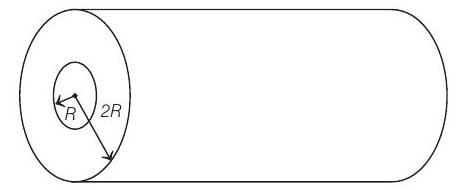Heat and Thermodynamics 3 Question 23
23. A cylinder of radius $R$ made of a material of thermal conductivity $K _1$ is surrounded by a cylindrical shell of inner radius $R$ and outer radius $2 R$ made of a material of thermal
conductivity $K _2$. The two ends of the combined system are maintained at two different temperatures. There is no loss of heat across the cylindrical surface and the system is in steady state. The effective thermal conductivity of the system is
$(1988,2 M)$
(a) $K _1+K _2$
(b) $K _1 K _2 /\left(K _1+K _2\right)$
(c) $\left(K _1+3 K _2\right) / 4$
(d) $\left(3 K _1+K _2\right) / 4$
Objective Questions II (One or more correct option)
Show Answer
Solution:
- Let $R _1$ and $R _2$ be the thermal resistances of inner and outer portions. Since, temperature difference at both ends is same, the resistances are in parallel. Hence,

$$ \begin{aligned} & \frac{1}{R} & =\frac{1}{R _1}+\frac{1}{R _2} \\ & \therefore \quad \frac{K\left(4 \pi R^{2}\right)}{l} & =\frac{K _1\left(\pi R^{2}\right)}{l}+\frac{K _2\left(3 \pi R^{2}\right)}{l} \\ \therefore & K & =\frac{3 K _2+K _1}{4} \end{aligned} $$






